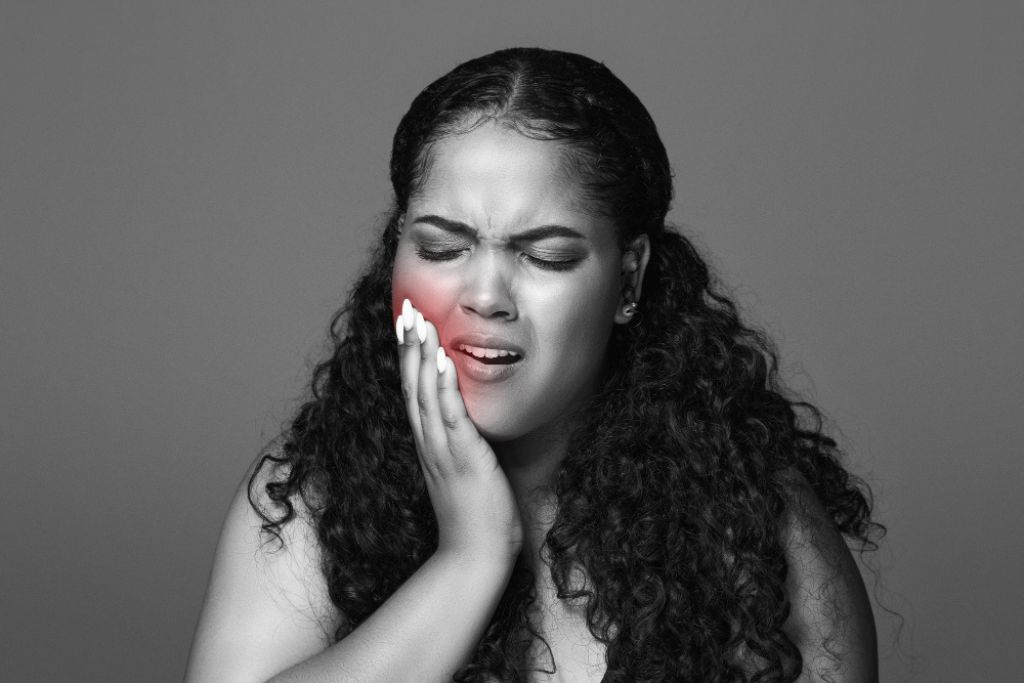Extracting a tooth is a regular dental operation that millions of individuals have every year. Most extractions recover successfully, but some individuals have a painful condition known as a dry socket. This condition causes severe pain and delays healing.
Many patients wonder about the connection between smoking and dry sockets. Some believe smoking has little impact on healing, while others think it only causes minor problems. Don’t fall for the smoking dry socket myth – understanding the real relationship between smoking and the risk of dry sockets helps patients make better decisions about their recovery.
This guide separates fact from fiction about smoking and dry socket. We will explore what really happens when smokers have teeth extracted and why dental professionals strongly advise against smoking after surgery.
What is Dry Socket and Why Does It Happen?
A dry socket is additionally known as alveolar osteitis. It occurs when a clot of blood at a tooth extraction site fails to develop correctly, dissolves, or fails to break out after the healing process is completed. This blood clot plays an important role in healing after tooth extraction. It serves as a protective covering for the underlying bone and nerve endings in the vacant tooth socket. The clot also provides a base for new tissue growth and bone formation.
When the clot is missing or damaged, the bone and nerves underneath become exposed to air, food, and bacteria. Several things can cause dry sockets to develop.
- Poor oral hygiene before or after extraction increases the increased risk of infection and clot problems.
- Physical actions like using straws, spitting hard, or rinsing strongly can knock out the protective clot.
- Hormonal changes, particularly in women on contraceptive tablets, might impair the clotting of blood.
- Trauma during extraction and bacterial infections also help cause dry socket formation.
Dry sockets present with obvious and serious complaints. Patients experience acute, pulsing pain, which frequently radiates to the ear, eye, temple, or neck on the same side as the removal. This pain usually starts 1-3 days after surgery and gets worse over time
Useful Guide: Lemon Balm for Weight Loss
Smoking Dry Socket Myth vs Reality
Myth 1: Smoking Only Causes Dry Socket and No Other Problems
Reality 1: Smoking creates many serious problems beyond just dry sockets. How does smoking cause dry sockets and other complications? Cigarettes contain toxic compounds, which restrict circulation to the healing region. This makes the healing process much slower.
Nicotine and other poisons make infections more likely. Also, smokers feel more pain during recovery because less blood reaches the healing tissues. The tar and chemicals in cigarette smoke irritate the wound directly. This causes more swelling and delayed healing.
Pro Tip: Normal pain decreases daily. If pain increases after day 2 or you taste something bad, call your dentist immediately.
Myth 2: Smoking One Cigarette After Tooth Removal Won’t Hurt Healing
Reality 2: Many patients ask, “Will one cigarette give me dry socket?” The answer is yes – even if you only smoke once following an extraction of a tooth, it might lead to major complications. When you smoke, you generate pressure in your mouth. This suction can readily remove the protective blood clot.
The pulling action is like using a straw, which dentists warn against—additionally, the harmful chemicals in just one cigarette start affecting blood flow right away. The heat from smoke can also damage the healing tissues. Many patients who developed a dry socket from smoking do so because they smoked “just one” cigarette after their procedure.
Pro Tip: Use nicotine patches for 72 hours instead of smoking. Patches give you nicotine without the deadly suction that removes blood clots.
Myth 3: Using Gauze Can Fully Stop Dry Socket Even If You Smoke
Reality 3: Gauze gives some protection to the extraction site, but it cannot stop all the bad effects of smoking. Gauze may soak up some chemicals and act as a barrier. However, it cannot prevent the blood vessel tightening caused by nicotine. It also cannot stop the suction created when you breathe in smoke. The gauze itself can get dirty with smoke particles.
It may need changing often, which can disturb the healing clot—using gauze as protection while smoking gives patients false hope and usually leads to problems.
Pro Tip: Dampen gauze with water before removing it. Change gauze only when necessary – each change risks disturbing your healing clot.
Myth 4: Dry Socket Pain Is Normal and Will Go Away Without Treatment
Reality 4: Dry socket pain is not normal tooth extraction pain. It needs professional dental treatment. The pain from a dry socket is generally severe, continuous, and throbbing. Patients often rate it 8-10 on pain scales. This strong pain happens because nerve endings in the jawbone become exposed and irritated.
Without proper treatment, dry socket pain can last for weeks. It may also lead to serious problems like bone infection. Dentists treat dry sockets by cleaning the socket and applying special dressings. They also prescribe proper pain medicine. Early treatment greatly reduces recovery time and prevents other problems.
Pro Tip: Dry socket pain explodes between days 2-3 and shoots to your ear. If pain jumps from mild to severe after day 2, get emergency dental care immediately.
Myth 5: Only Poor Mouth Cleaning Causes Dry Socket, Smoking Is Not a Big Factor
Reality 5: Does smoking cause dry sockets? Absolutely – smoking is actually one of the biggest risk factors for dry sockets. This is true even when oral hygiene is good. Research says that smokers are roughly three times more inclined to get dry sockets than nonsmokers. This happens even when their mouth cleaning is excellent. Why does smoking cause dry sockets? The harmful chemicals in tobacco products interfere with blood clot formation.
They also make clots less stable. Nicotine inhibits the flow of blood, thereby rendering it more difficult for clots to develop and remain in position. While poor oral hygiene does increase dry socket risk, the smoking dry socket myth that it’s not a major factor is completely false – smoking greatly raises the chances of this problem.
Pro Tip: Non-smokers: 2-5% dry socket risk. Heavy smokers: 25-40% risk. Quit just 12 hours before extraction to drop your risk to under 8%.
Myth 6: Dry Socket Only Happens With Hard Tooth Removals
Reality 6: A dry socket can happen after any tooth extraction, no matter how easy or hard. While difficult extractions like wisdom teeth do have higher risks, simple extractions can also cause dry sockets. This is especially true for smokers. The extraction difficulty affects the first injury to tissues.
However, factors like smoking influence the healing process, no matter how complex the surgery is. Many patients get dry sockets after routine extractions because they do not follow post-surgery care properly. Smoking increases the risk of dry sockets for all types of tooth extractions, from simple single-tooth extractions to complex surgeries.
Myth 7: You Don’t Need to Quit Smoking After Tooth Removal If You Smoked Before
Reality 7: It’s important to avoid smoking right after tooth extraction as it gives big benefits for healing. This is valid even for those who have been smoking for years. The body starts to recover from smoking effects within hours of quitting. Blood flow starts to improve within 12-24 hours.
The oxygen content of the blood rises fast. These improvements directly help the healing tooth extraction site. They bring additional nourishment and oxygen into the region. Even stopping for just 3-7 days after extraction greatly reduces the risk of a dry socket. It also improves overall healing results. Long-term smokers who quit after extraction often heal faster than expected.
How Smoking Affects Overall Healing Beyond Dry Socket
Smoking hurts tooth extraction healing in many ways beyond just dry sockets. The healing process needs good blood supply, oxygen delivery, and proper immune function. Smoking damages all of these.
What about smoking causes dry sockets and other healing problems? Nicotine makes blood vessels get smaller. This reduces blood flow to healing tissues. Less blood flow implies that less oxygen and nutrients access the cells that are required to recover. Reduced blood flow also makes it harder to remove waste products from the healing area. This leads to slower tissue repair.
The immune system works worse in smokers. This makes infections more likely and harder to fight off. White blood cells fight bacteria and help healing. These cells work poorly when smoking toxins are present. This weak immune response increases the increased risk of infections after surgery. It also delays the natural recovery process.
Smoking also hurts bone healing specifically. The harmful chemicals in tobacco interfere with bone cell formation. They reduce the proteins needed for bone repair. Cigarette smoke contains carbon monoxide, which decreases the level of oxygen in the bloodstream.
This makes cellular repair processes even slower. The heat from smoking can damage delicate healing tissues directly. These combined effects mean smokers have slower wound closure, more pain, and higher problem rates, significantly impacting their oral health.
Effective Ways to Prevent Dry Socket After Tooth Removal
How to prevent dry sockets while smoking? The easiest strategy to avoid dry sockets is to stop smoking totally for 48-72 hours following the tooth’s removal. Longer periods give even better results. How to prevent dry socket while smoking if you cannot quit completely? Use nicotine patches or gum instead of cigarettes. This helps avoid harmful suction damage. These alternatives still affect blood flow but eliminate the physical trauma from smoking.
Many patients wonder how to smoke without getting a dry socket, but the truth is there’s no completely safe way to smoke after extraction. Do not use straws, spit hard, or rinse strongly for the first 24 hours after surgery. These actions create negative pressure that can pull out the protective blood clot.
Keep your mouth clean by lightly brushing the remaining teeth and practicing basic oral hygiene. Rinse with warm salt water after 24 hours. Take your prescribed medicines as directed. Eat soft foods for several days. Follow all instructions from your dentist carefully to protect your oral health. Most importantly, get professional care right away if you develop severe, lasting pain.
Quit the Risk by Trusting Experts Who Understand
Smoking increases your risk of dry socket, but you don’t have to face recovery alone. Our primary care clinic offers expert tooth extractions with customized care for smokers, including advanced aftercare to protect your healing. Get the support your smile deserves.
Worried about dry socket from smoking? Our expert dental team provides personalized post-op care and safe alternatives for smokers.

Worried about dry socket from smoking? Our expert dental team provides personalized post-op care and safe alternatives for smokers.



